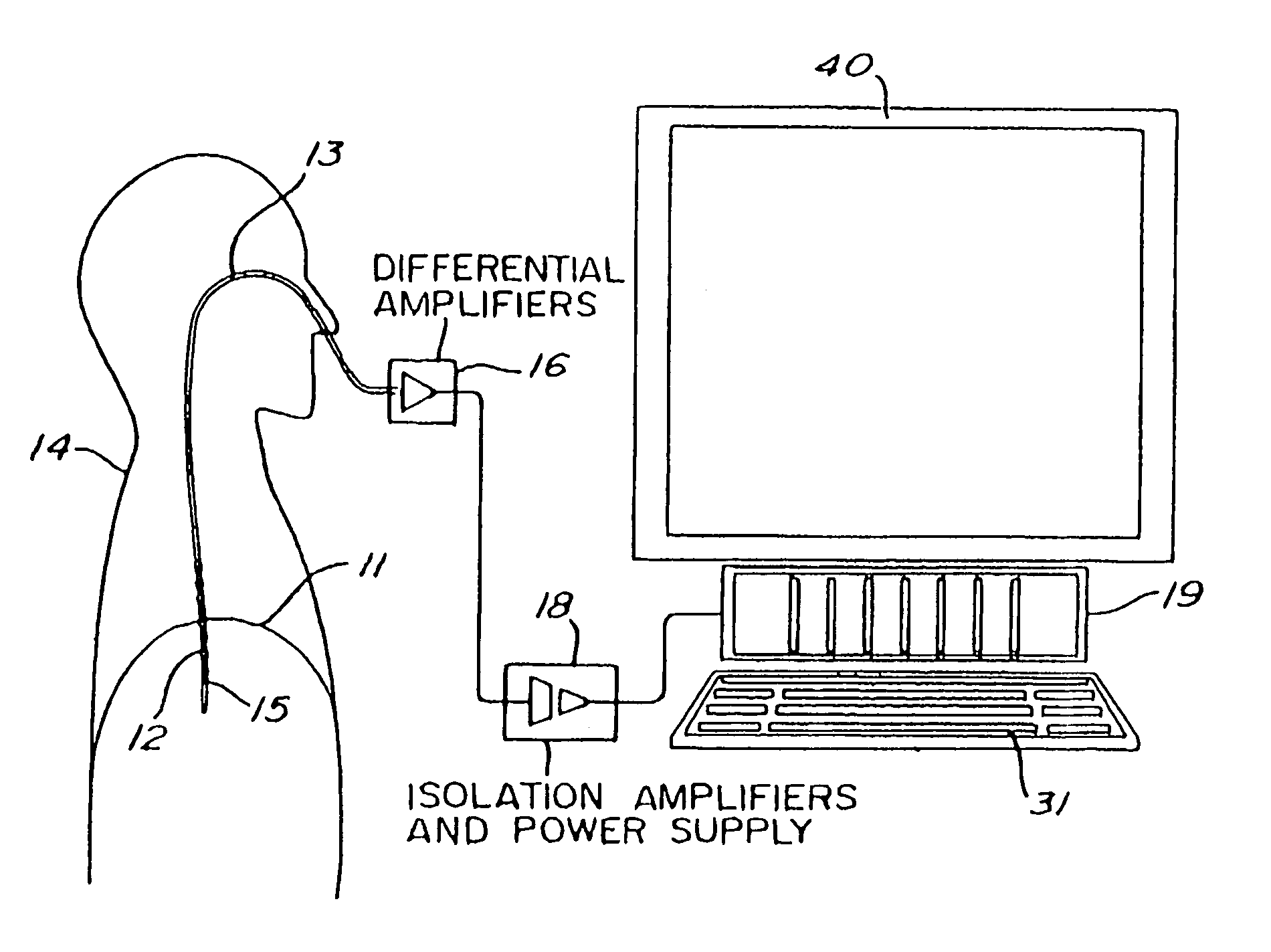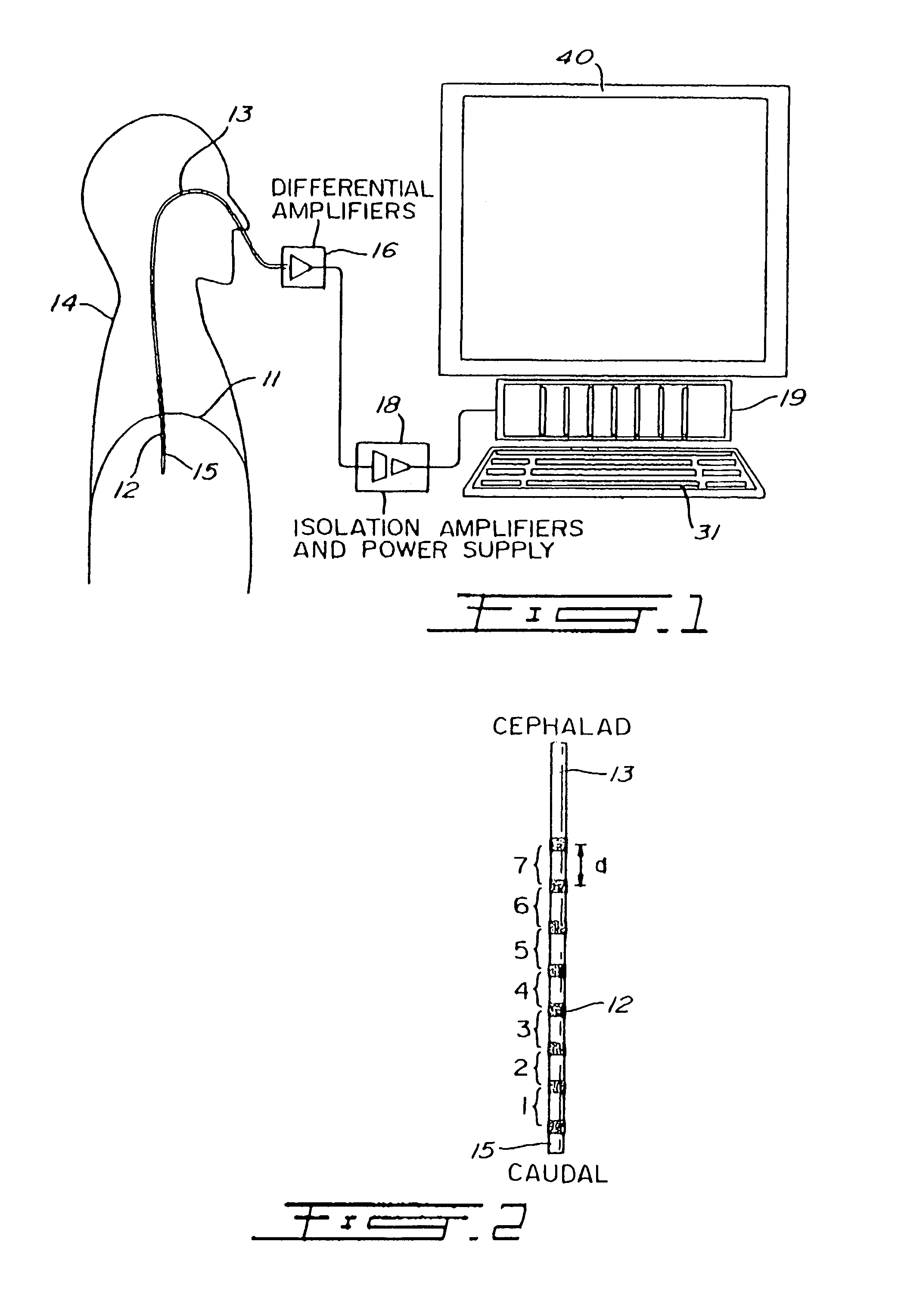Proportional pressure assist ventilation controlled by a diaphragm electromyographic signal
a technology of electromyographic signal and diaphragm, which is applied in the direction of valve operating means/releasing devices, diagnostic recording/measuring, and identification of people. it can solve the problems of inability to evaluate respiratory drive by measuring such as the rate of pressure rise or lung volume, and none of these parameters can provide reliable measures
- Summary
- Abstract
- Description
- Claims
- Application Information
AI Technical Summary
Benefits of technology
Problems solved by technology
Method used
Image
Examples
Embodiment Construction
[0031]Although the preferred embodiment of the present invention will be described in relation to a double subtracted EMGdi signal, it should be kept in mind that the concept of the present invention can be used with any respiratory muscle signal.
[0032]To measure EMG activity of the diaphragm 11 (EMGdi) of a human patient 14, an array of electrodes such as 12 (FIGS. 1 and 2) are mounted on the free end section 15 of an oesophageal catheter 13, with a constant inter-electrode distance d (FIG. 2). As shown in FIG. 1, the catheter 13 is introduced into the patient's oesophagus through one nostril or the mouth until the array of electrodes 12 is situated at the level of the gastroesophageal junction. The diaphragm 11 and / or the oesophagus slightly move during breathing of the patient 14 whereby the array of electrodes 12 also slightly moves about the diaphragm 11. As will be explained in the following description, autorhatic compensation for this displacement is provided for.
[0033]Accor...
PUM
 Login to View More
Login to View More Abstract
Description
Claims
Application Information
 Login to View More
Login to View More - R&D
- Intellectual Property
- Life Sciences
- Materials
- Tech Scout
- Unparalleled Data Quality
- Higher Quality Content
- 60% Fewer Hallucinations
Browse by: Latest US Patents, China's latest patents, Technical Efficacy Thesaurus, Application Domain, Technology Topic, Popular Technical Reports.
© 2025 PatSnap. All rights reserved.Legal|Privacy policy|Modern Slavery Act Transparency Statement|Sitemap|About US| Contact US: help@patsnap.com



